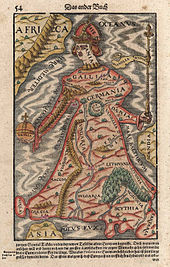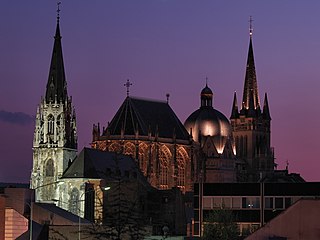
Aachen is, with around 249,000 inhabitants, the 13th-largest city in North Rhine-Westphalia, and the 28th-largest city of Germany.

Wageningen is a municipality and a historic city in the central Netherlands, in the province of Gelderland. It is famous for Wageningen University, which specialises in life sciences. The municipality had a population of 39,635 in 2021, of which many thousands are students from over 150 countries.

Theodore von Kármán, was a Hungarian-American mathematician, aerospace engineer, and physicist who was active primarily in the fields of aeronautics and astronautics. He was responsible for many key advances in aerodynamics, notably on supersonic and hypersonic airflow characterization, and the widely recognized threshold of outer space is named the "Kármán line" based on his work. He is regarded as an outstanding aerodynamic theoretician of the 20th century.
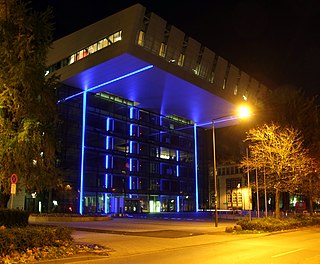
RWTH Aachen University, also known as North Rhine-Westphalia Technical University of Aachen, Rhine-Westphalia Technical University of Aachen, Technical University of Aachen, University of Aachen, or Rheinisch-Westfälische Technische Hochschule Aachen, is a German public research university located in Aachen, North Rhine-Westphalia, Germany. With more than 47,000 students enrolled in 144 study programs, it is the largest technical university in Germany. In 2018, the university was ranked 31st in the world university rankings in the field of engineering and technology, and 36th world-wide in the category of natural sciences.

The Gouden Griffel is an award given to authors of children's or teenagers' literature in the Netherlands.
The Gottfried Wilhelm Leibniz Prize, in short Leibniz Prize, is awarded by the German Research Foundation to "exceptional scientists and academics for their outstanding achievements in the field of research". Since 1986, up to ten prizes are awarded annually to individuals or research groups working at a research institution in Germany or at a German research institution abroad. It is considered the most important research award in Germany.
Josef Meixner was a German theoretical physicist, known for his work on the physics of deformable bodies, thermodynamics, statistical mechanics, Meixner polynomials, Meixner–Pollaczek polynomials, and spheroidal wave functions.
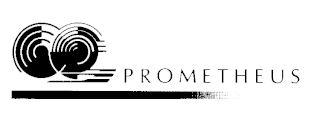
The Eureka PROMETHEUS Project was the largest R&D project ever in the field of driverless cars. It received €749,000,000 in funding from the EUREKA member states, and defined the state of the art of autonomous vehicles. Numerous universities and car manufacturers participated in this Pan-European project.

Yao Tongbin was a Chinese scientist and one of China's foremost missile engineers. He was beaten to death during the Cultural Revolution in 1968. In 1999, he was posthumously awarded the Two Bombs, One Satellite Meritorious Award, and officially recognized as a "martyr" within China.

Gerard Caris is a Dutch sculptor and artist who has pursued a single motif throughout the course of his artistic career, the pentagon.

Dr. Wolfgang Benjamin Klemperer was born in Dresden, Germany, the son of the Austrian nationals Leon and Charlotte Klemperer. He was in his time a prominent aviation and aerospace scientist and engineer, who ranks among the pioneers of early aviation.
Holger H. Hoos is a German-Canadian computer scientist and a Alexander von Humboldt-professor of artificial intelligence at RWTH Aachen University. He also holds a part-time appointment as a professor of machine learning at Leiden University, and he is an adjunct professor at the Computer Science Department of the University of British Columbia, where he held a full-time professorial appointment from 2000 until 2016. His research interests are focused on artificial intelligence, at the intersection of machine learning, automated reasoning and optimization, with applications in empirical algorithmics, bioinformatics and operations research. In particular, he works on automated algorithm design and on stochastic local search algorithms. Since 2015, he is a Fellow of the Association for the Advancement of Artificial Intelligence (AAAI), and since 2020 a Fellow of the European Association for Artificial Intelligence (EurAI) as well as a Fellow of the Association for Computing Machinery (ACM).

Reinhard Wilhelm is a German computer scientist.

Marc Sluszny was an adventurer, sportsman, keynote speaker, mental coach and author. Through extreme sports he searched to overcome his mental and physical boundaries. He broke several records and participated many times in the European and World Championships in different disciplines. During the last few years, Marc focused on coaching executive teams and high-level athletes.
Bernd J. Kröger is a German phonetician and professor at RWTH Aachen University. He is known for his contributions in the field of neurocomputational speech processing, in particular the ACT model.
Bernd Georg Lottermoser is university professor with expertise in the sustainable extraction of mineral resources.
Bettina Eick is a German mathematician specializing in computational group theory. She is Professor of Mathematics at the Technische Universität (TU) Braunschweig.
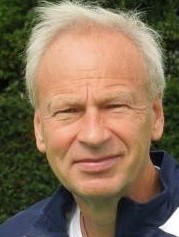
Dieter Gilberto Hillert is a German-American biolinguist and cognitive scientist. His research focuses on the human language faculty as a cognitive and neurological system. He is known for work on the neurobiology of language, real-time sentence processing, and language evolution. He advocates comparative evolutionary studies of cognition, argues against tabula rasa models, and favors computational theories of mind.

Regina Palkovits is a German chemist who is a Professor of Chemistry at the RWTH Aachen University. Her research considers heterogenous catalysis. She was elected a Fellow of the North Rhine-Westphalian Academy of Sciences, Humanities and the Arts in 2020.

Derk Geertsz Boswijk is a Dutch politician serving as a member of the House of Representatives since the 2021 general election. A member of the Christian Democratic Appeal (CDA), he previously held a seat in the States of Utrecht from 2015 to 2021 and chaired his party's caucus during the last two of those years.

